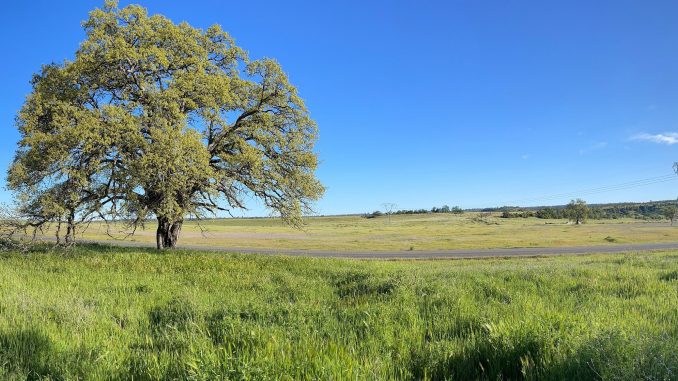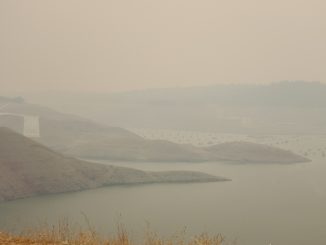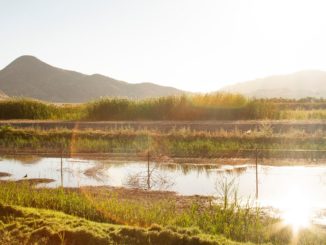
Butte County is blessed with bountiful fresh water within its boundaries. Big Chico Creek, Butte Creek, Feather River and the Sacramento River all support incredible and vibrant natural ecosystems. What is not as apparent is the importance of Butte County’s vast underground water resources. This groundwater is connected directly to the surface waters that residents enjoy as part of the daily landscape.
Until recently, property owners in California had the right to drill a well and pump any water that was available. Agriculture and many small communities rely on groundwater for irrigation and drinking. But when more groundwater is pumped out of the ground than is replenished by rain there can be serious problems — and unfortunately that is what has happened in Butte County and many other regions. When the level of groundwater declines, small communities lose their drinking water, the roots of trees go dry and farmers dig deeper and deeper wells.
According to the Community Water Center, there are 300 small public water systems in California, predominantly in low-income communities, that have been unable to supply safe drinking water for many years. During the latest drought in Butte County, in the fall of 2022, 81 percent of monitoring wells measured groundwater at all-time lows. There were many reports of domestic wells going dry near Chico, Durham, Oroville and Palermo, and although 2023 provided rain and relief, and groundwater levels started to recover, there are still many wells with significantly declining trends. One wet year is not enough to recover after decades of overdraft and Californians know that wet years are a rare occurrence.
The era of unmanaged groundwater and the ability of landowners to pump as much as they want started to make a slow-motion exit back in 2014 when the state passed the Sustainable Groundwater Management Act (SGMA). In the intervening 10 years, in places where groundwater levels are declining, agencies (called Groundwater Sustainability Agencies or GSAs) have been established to study and write plans (called Groundwater Sustainability Plans or GSPs) describing how they will bring their groundwater levels into some sort of stable equilibrium by 2040. But while SGMA proclaimed a commitment to local control, the state retained a lot of oversight. The GSPs all had to be submitted to the Department of Water Resources, and in some cases, they were sent back as “incomplete” or “inadequate” and the GSAs had to try again.
In one case in Kings County, even the second attempt at writing an adequate GSP was deemed unsatisfactory, and the subbasin was put on “probation” on April 16 for failing to come up with a plan that would adequately protect the region’s groundwater. The result of this decision for Kings County farmers is that they are scrambling to put meters on their pumps, pay $20 per acre-foot of extracted water, and pay an annual registration fee of $300 per well. If deficiencies in the plan aren’t fixed within a year, the state could take over management completely and impose pumping limits. Since the historic April ruling, a flurry of lawsuits, and recriminations have rocked the county, forcing the GSAs to reinvent themselves at a time when they should be focusing on coming into compliance.
The Kings County Farm Bureau Vice President, Garrett Gilcrease, was reported in the online news publication SJV Water acknowledging that the law has a been on the books for a decade and landowners should have gotten involved sooner. “That’s on us as growers,” he said. This situation serves as a cautionary tale for others. The three subbasins in Butte County, called Vina, Wyandotte Creek and Butte all got a pass on their GSPs and there are fewer groundwater-related problems in Butte County compared to Kings, but this doesn’t mean the community should rest easy.
Landowners in Butte County are paying assessments or fees to support efforts to bring aquifers into a sustainable equilibrium. On December 5, 2023, landowners on the western side of the county formed the Tuscan Water District, stating their intent to “protect Butte County groundwater for future generations.” There are different types of voting structures and the Tuscan landowners chose to create an entity in which the vote to create the district was by acres owned rather than by individuals living within its boundaries, and several large landowners dominated the votes.
All that precious water flowing through the county in creeks and rivers, plus the groundwater that we can’t see, may need more grassroots protection than SGMA provides. County officials state that there are prohibitions on exporting water out of the county, but those prohibitions are weak and rely on oversight by the County Board of Supervisors. It will be up to community members to stay abreast of developments and activities as they unfold.
Judith Redmond is a farmer in Yolo County working with the Community Alliance with Family Farmers to track implementation of SGMA. If you have questions about how SGMA will affect farmers, contact CAFF at sgma@caff.org




“[G]roundwater substitution programs can expand long-term water availability by more actively using local groundwater storage. Once GSAs establish sustainability plans that address undesirable impacts of pumping, it should be possible to ease the coarser restrictions on this practice found in most county ordinances—which effectively preclude trades if they entail water leaving the county. If counties with restrictive groundwater export ordinances fail to amend their laws to conform to SGMA, the legislature should consider preempting local laws that discriminate against out-of-county uses or place undue burdens on groundwater and groundwater-substitution transfers that would not jeopardize sustainable groundwater management of the source aquifer.” Public Policy Institute of Ca.
“Unfortunately, many Groundwater Sustainability Agencies have been
dominated by the historic powers in the region, and the implementation
of many plans as currently developed would favor those with the
strongest voices, the most money, and the most political power. While
SGMA included novel stakeholder engagement requirements in an attempt to
give voice to the drinking water and environmental users of groundwater,
most GSAs botched this and continued with business as usual.” Union of Concerned Scientists
According to the Calif Dept of Water Resources, “The [Vina]Groundwater Sustainability Agency is choosing to manage the Subbasin below historic lows. The GSA does not access how the proposed minimum thresholds for the chronic lowering of groundwater levels may impact other sustainability indicators.” Noe the less, DWR approved the plan which includes dubious experimental aquifer recharge projects that can attempt to take advantage of storage space created when water tables drop. The impacts to existing domestic wells, valley streamflow, Chico’s groundwater dependent urban forest and valley oak woodlands will be catastrophic if the Vina Plan is used to facilitate more water transfer/sales to politically powerful business interests. AquAlliance participated in the years-long stakeholder planning process but our input was not incorporated in the Vina Groundwater “Sustainability” plan. AquAlliance has therefore challenged the Plan via legal process.
https://chico.newsreview.com/2023/05/03/crash-course-in-water/ This article describes the hydrodynamic Tuscan Aquifer System that is the target of water marketers associated with the Calif Dept of Water Resources and the US Bureau of Reclamation.
Thank you Jim Brobeck for all your comments posted here. Community members such as myself, who have been following water issues since the efforts to form the Tuscan Water District became widely known, have had an eye opening education on just what is happening with our water table. Watching the majority SHAC members totally disregard the overwhelming scientific evidence that continuing the pace of over-extracting our aquifer (agricultural groundwater pumping) will result in many more wells going dry and our urban canopy in grave jeopardy, well this is simply a dereliction of duty driven by self interest and profiterring. I support the legal efforts of AquAlliance to help rein in abuse of our Tuscan Aquifer and I pray many in this community will step up to do the same!